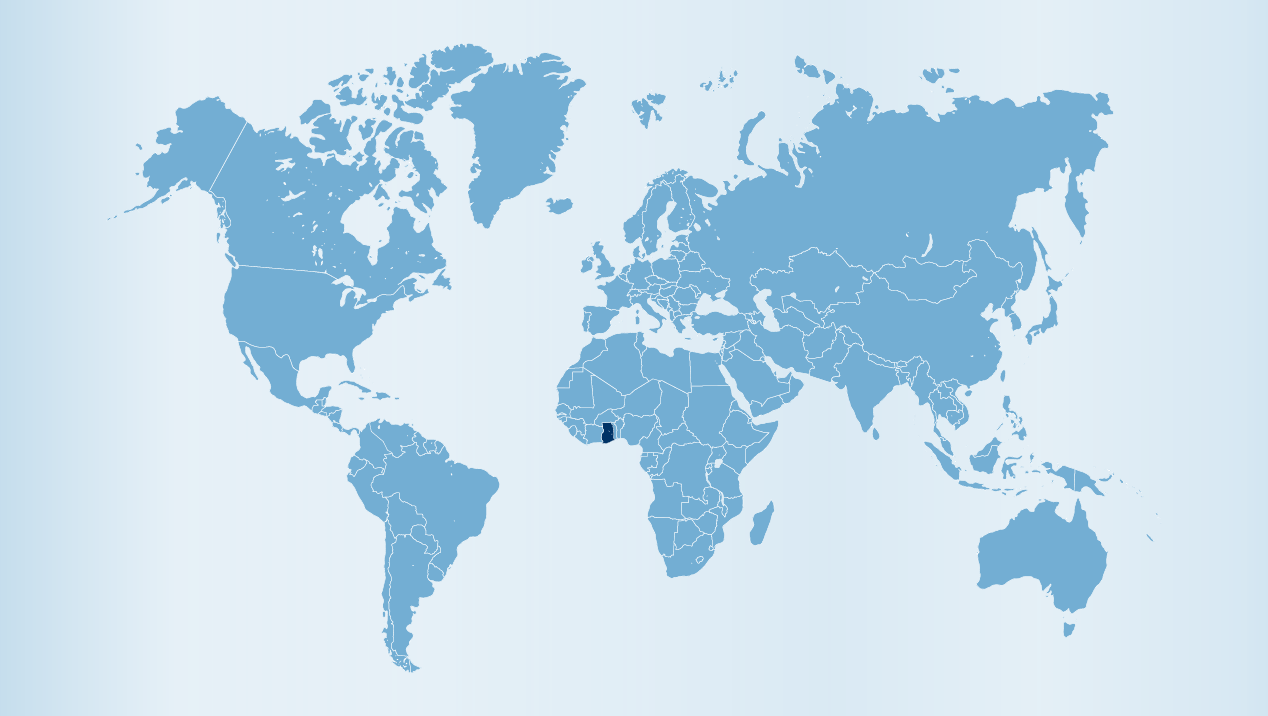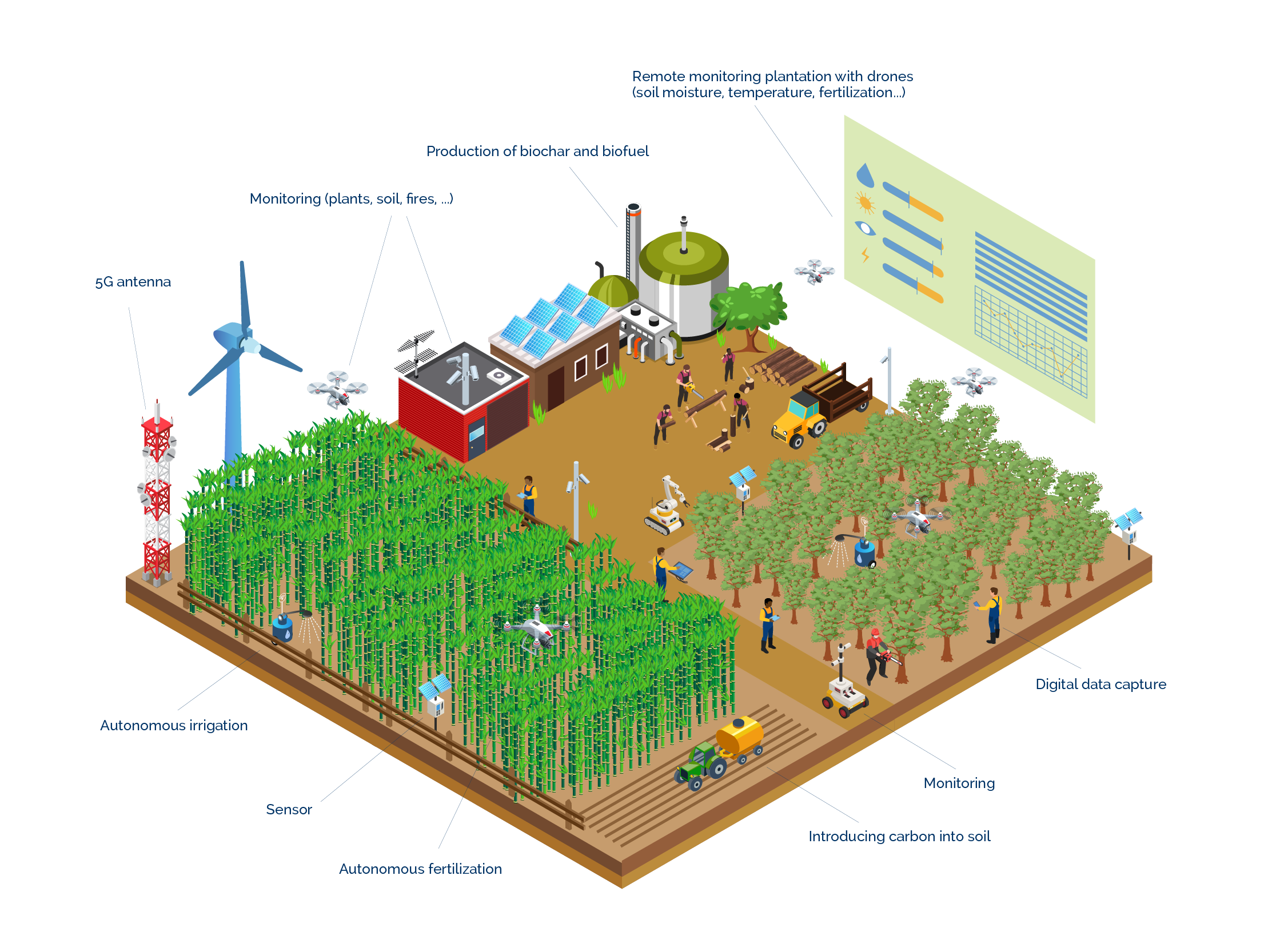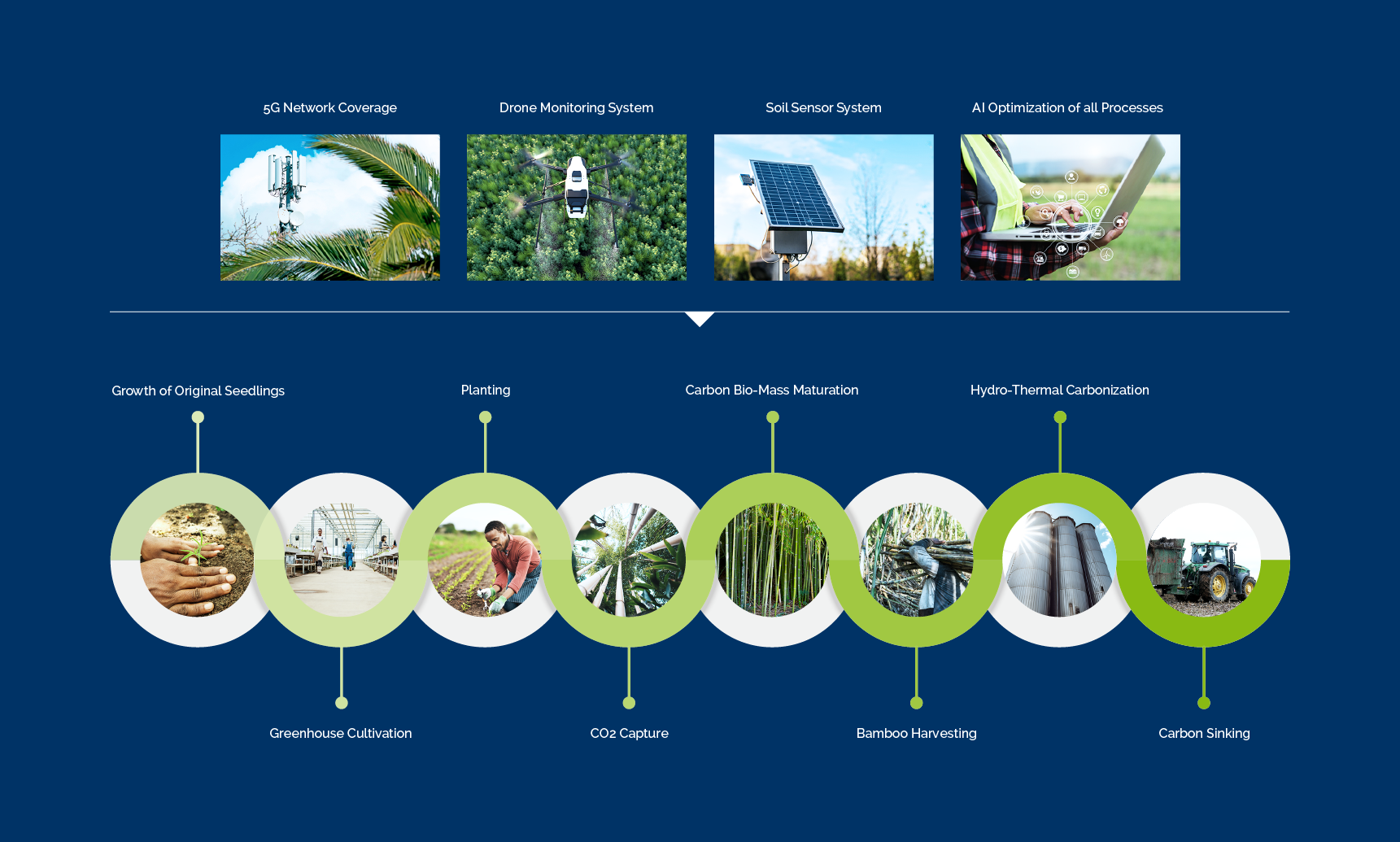New paths for sustainability and renewable energy in Africa
The commitment to work in a climate-neutral way led to binding goals for the UET Group. With binding goals, real projects emerged – close to nature, that produce results and stand up to any scrutiny – in the long term.
New business ideas emerged from these projects and thus sustainability becomes business.
In the Carbon Capturing & Bio-Energy product portfolio, the UET Group develops technologically innovative and nature-based products for the storage of carbon dioxide (CO2) and sustainable energy sources from biomass. This is a significant step towards climate protection and sustainable energy production.
Digitalisation with communication networks strengthens the value chain.
The UET Group operates a plantation in Ghana in West Africa with a size of 49,000 hectares (ha) or about 490 square kilometers (km2). The operation focuses on sustainability and coexistence with local society, supporting the transformation of Africa into a renewable energy superpower (note: UN Secretary-General Antonio Guterres at the Climate Summit in Nairobi in early September 2023).
Our unique approach involves creating a global leader and brand in carbon offsetting at industrial scale. We use modern agricultural, social, and infrastructural systems, for an efficient carbon capture and reduction cycle – with a clear focus on transparency and the highest quality standards.
Private 5G networks for the digitalisation of sustainable agriculture and forestry
The UET Group is setting new standards in the digitalisation of agriculture. With our many years of experience in the development and construction of telecommunications networks, we are planning the construction of the world’s largest private 5G network on our plantations. This network not only ensures reliable connectivity and communication, but also increases the efficiency and productivity of all agricultural process steps.
The combination of infrastructure, networking of sensors, integration of drones and artificial intelligence sets new standards.
We combine sustainability and cutting-edge technology to shape and promote a healthy future and economic development in Ghana and worldwide. Insights and experiences flow into the further development of our products and solutions.







